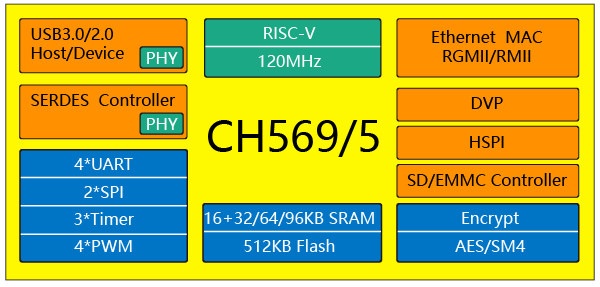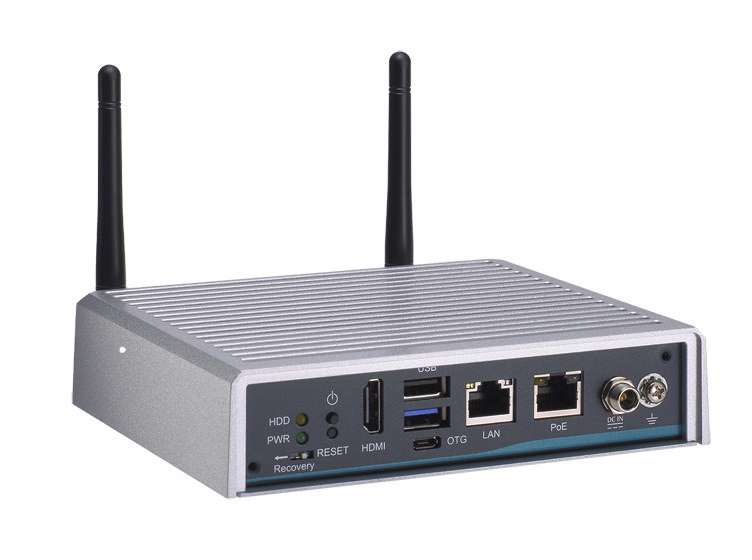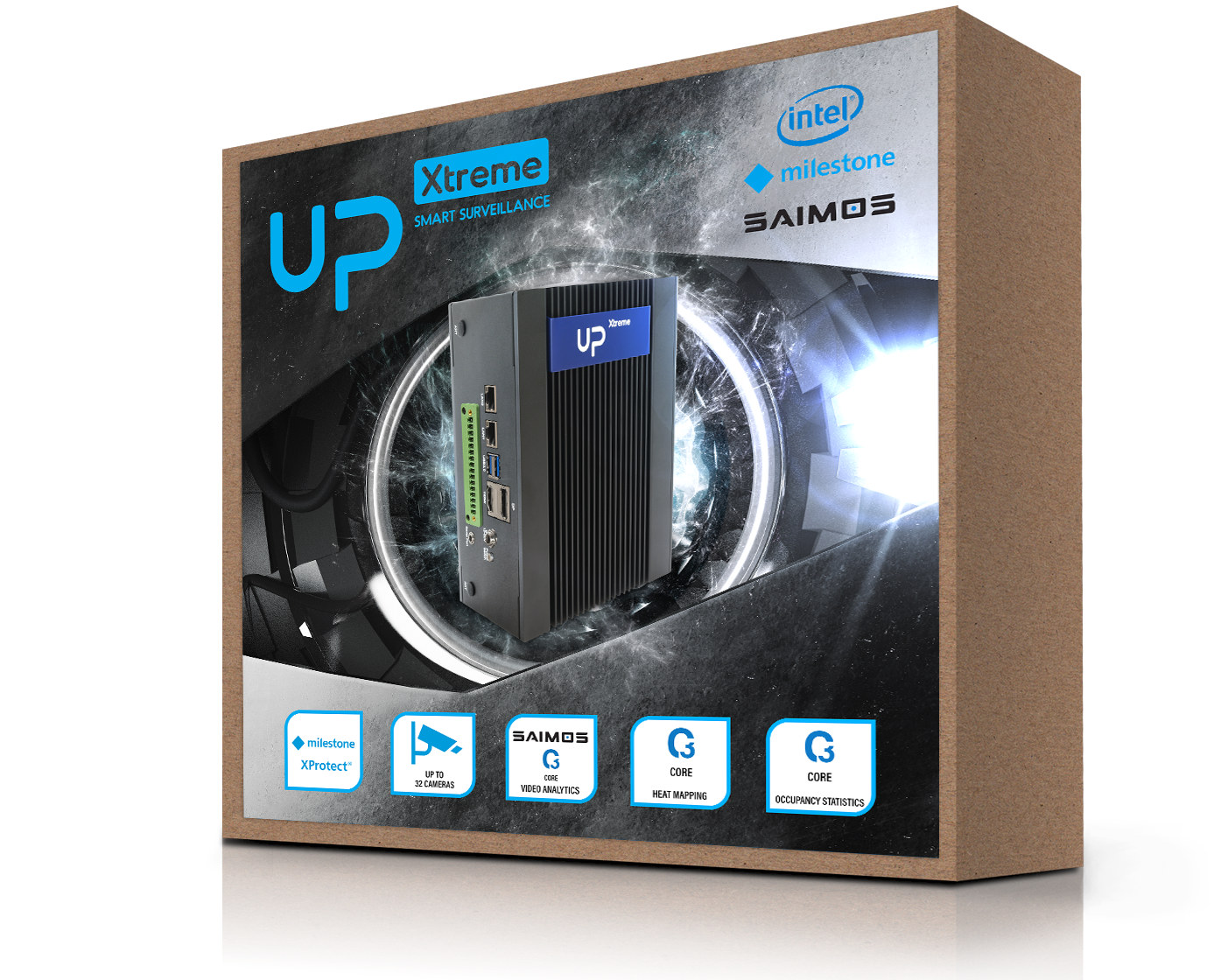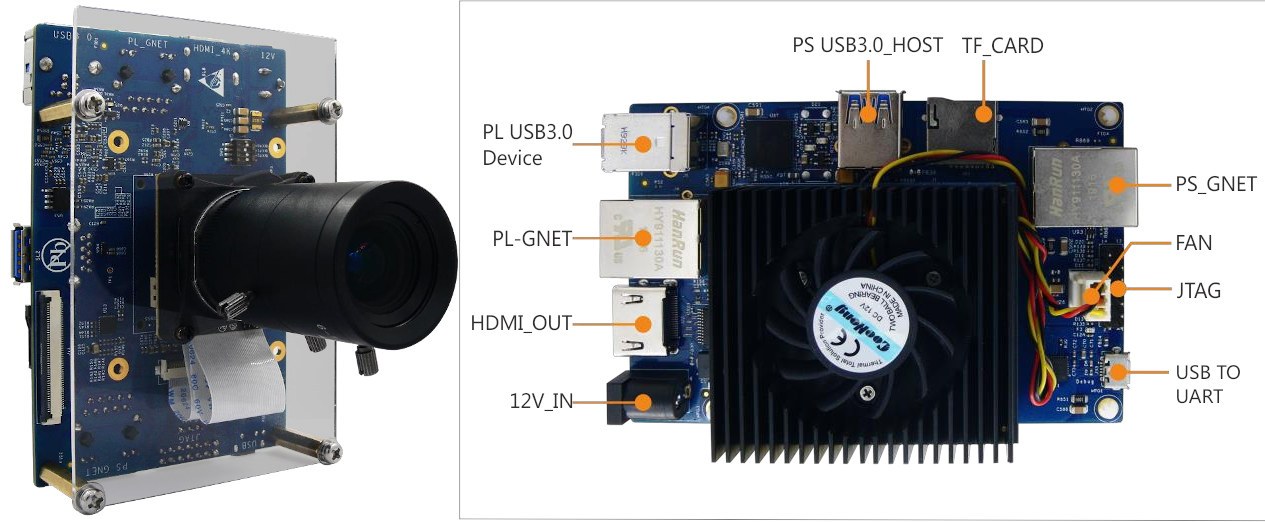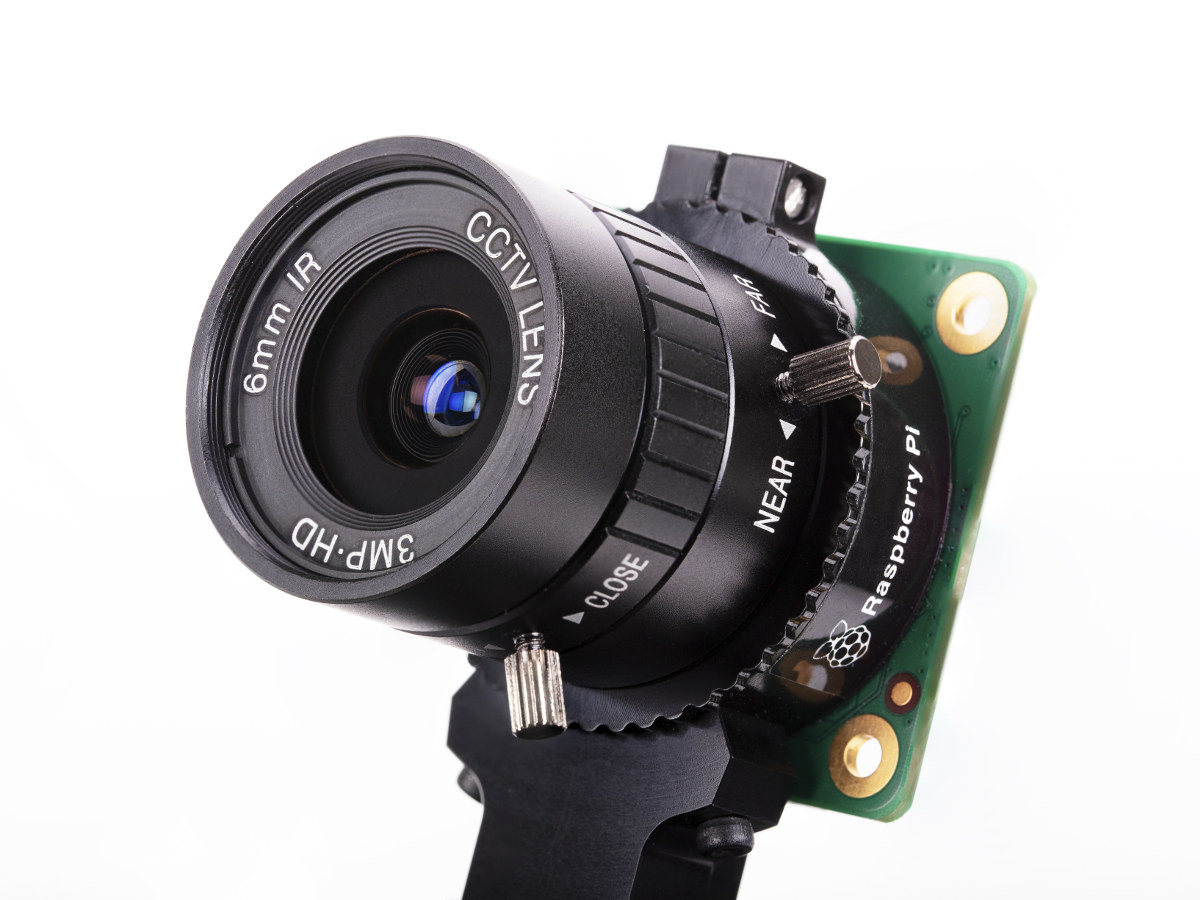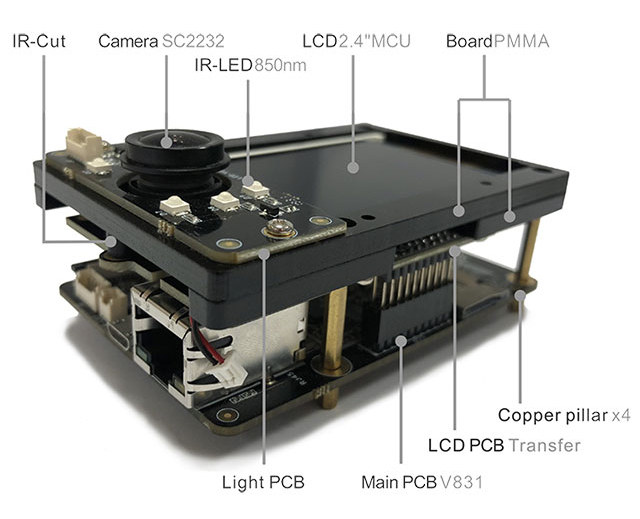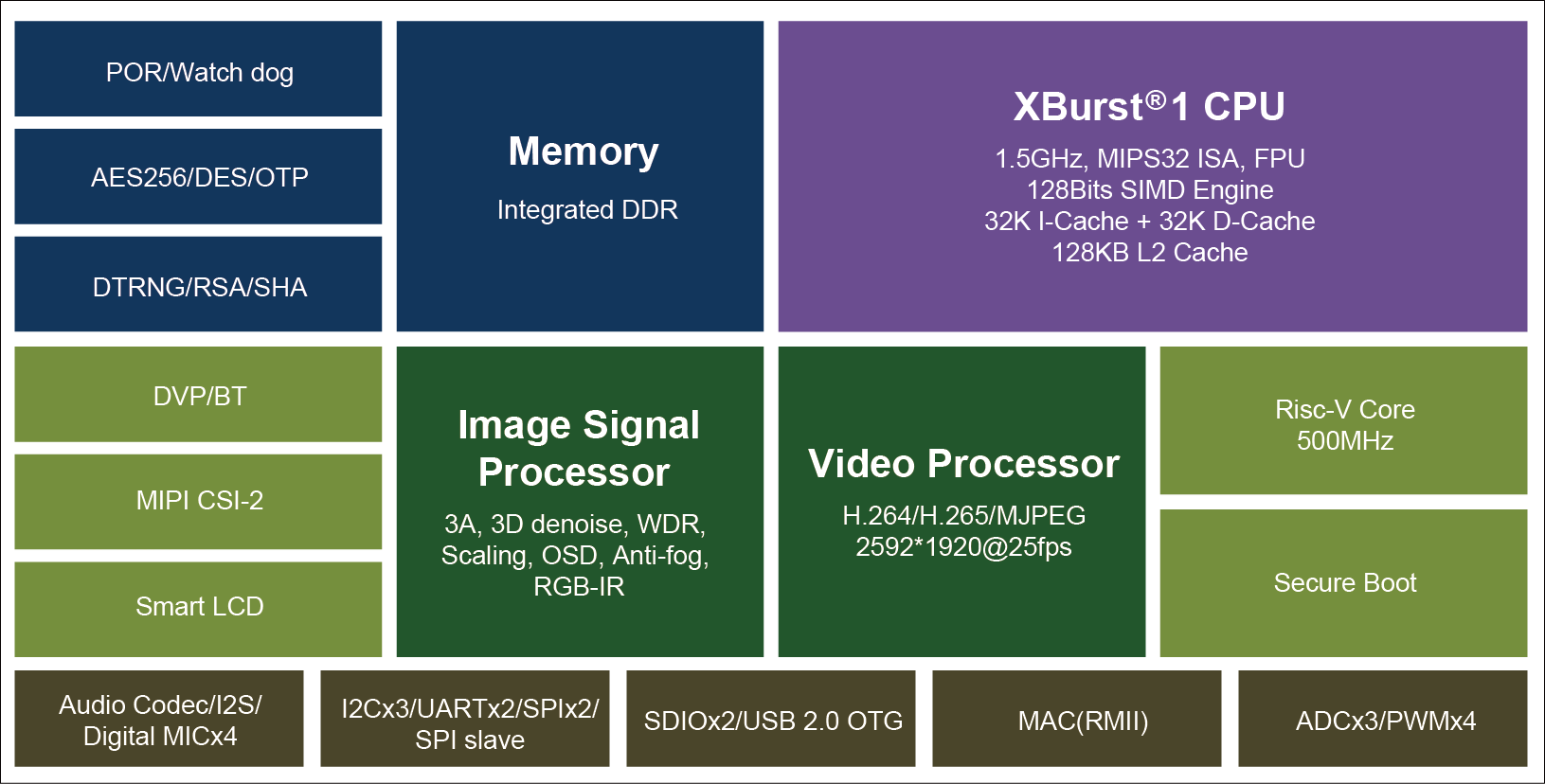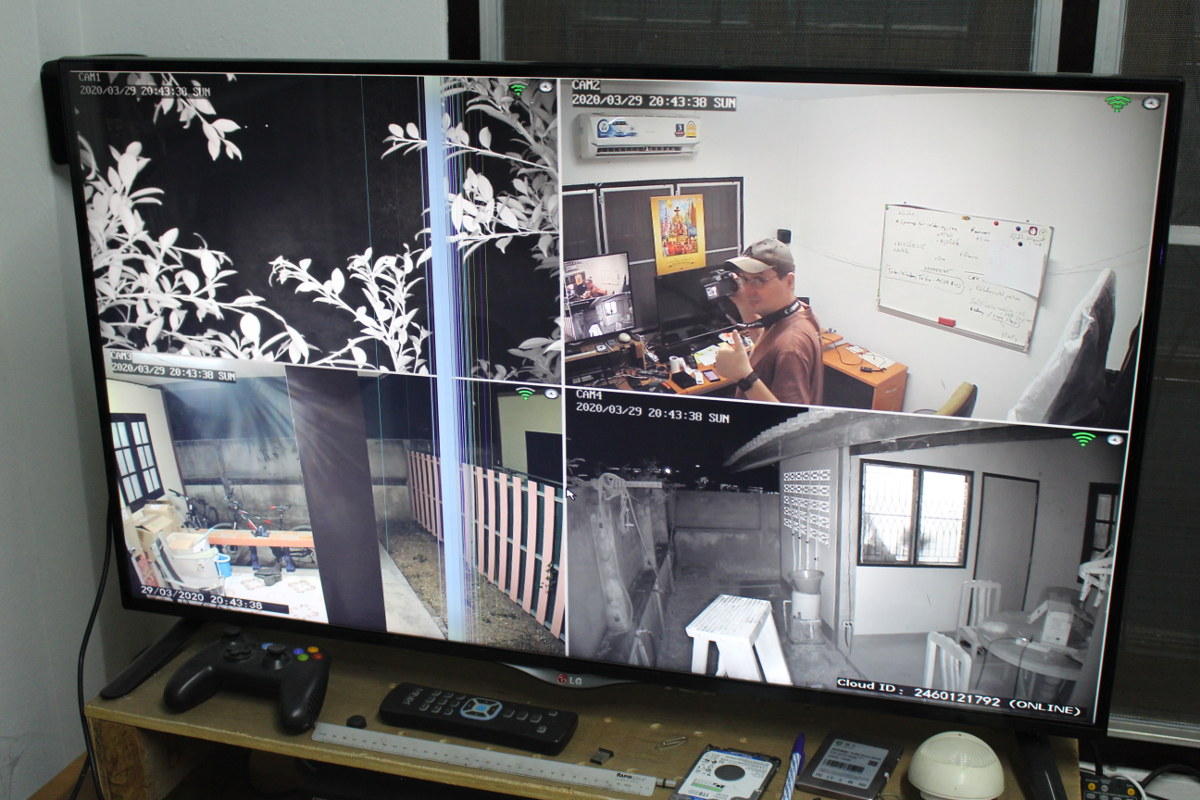RISC-V open architecture has made its way into low-cost low power general purpose MCUs such as Gigadevices GD32V or WCH CH32V103, Western Digital hard drives, some AI processors notably Kendryte K210, and even Linux capable boards including Microsemi’s PolarFire SoC Icicle kit. But more applications featuring RISC-V architecture are coming with, for instance, WCH CH569 RISC-V processor featuring USB 3.0, Gigabit Ethernet, DVP camera, and 1.25 SERDES block all managed by a RISC-V core clocked at 120 MHz. CH569 (and CH565) processor key features and specifications: CPU – RISC-V (RISC-V3A) core @ 120MHz with hardware multiplication and division, programmable interrupt controller, low-power two-stage pipeline Memory – 16KB 32-bit SRAM, 32/64/96KB configurable 128-bit SRAM Storage Internal – 448KB code flash, 32KB data flash External – SD/eMMC controller with single-wire, 4-wire, 8-wire data communication mode. Complies with eMMC card 4.4 and 4.5.1 specifications, and compatible with 5.0 specifications Networking – Gigabit Ethernet […]
NVIDIA Jetson Nano Powered Edge AI System Supports one PoE Camera, Operates in -30 to +60°C Temperature Range
Axiomtek AIE100-903-FL is a fanless edge AI System powered by NVIDIA Jetson Nano system-on-module and designed to connect a single 15W PoE camera for AI computing, edge computing, smart retail, smart city, and more. The solution can operate in a wide range of temperatures from -30°C to +60°C and comes with an optional IP42-rated waterproof cover kit that makes it suitable for use in moist places and “semi-outdoor environments” including freezers and under eaves (edges of the roof which overhang the face of a wall) and other outdoor locations with some protection against rain. Axiomtek AIE100-903-FL specifications: SoM – NVIDIA Jetson Nano with quad-core Arm Cortex-A57 processors, 128 CUDA core NVIDIA Maxwell GPU, 4GB 64-bit LPDDR4 and 16GB eMMC flash Storage – 1x M.2 Key M 2280 with PCIe x4 NVMe SSD slot, 1x Micro SD slot Video Output – 1x HDMI 2.0 up to 4K2K @ 60 Hz Connectivity […]
UP Xtreme Smart Surveillance Combines Whiskey Lake SBC, Myriad X VPUs, and Video Management & Analytics Software
We’re seeing more and more computer vision products with built-in artificial intelligence accelerated features like face recognition or object detection including AI cameras, facial recognition systems, and AI NVR systems. It’s great as a consumer because of less frequent and more accurate alerts in security camera systems but more worrying as a citizen due to mass surveillance. But the trend is here to stay, and AAEON has just announced the UP Xtreme Smart Surveillance solutions powered by UP Extreme Whiskey Lake SBC with either an Intel Core i5-8365UE or Intel Core i7-8665UE processor, as well as two Intel Movidius Myriad X VPUs using OpenVINO SDK. The system also leverages Milestone video management software (VMS) and SAIMOS video analytics software. Based on the photo above, the hardware looks to be UPX-Edge Embedded Computer which we previously covered in details at launch last December. Instead of hardware, the focus of Up Xtreme […]
4K Vision Edge Computing Platform Features Xilinx Zynq UltraScale+ ZU3EG MPSoC
Last year, MyIR Tech introduced MYD-CZU3EG development board powered by a Xilinx Zynq UltraScale+ ZU3EG MPSoC with Arm Cortex-A53 cores and FPGA fabric designed for applications such as cloud computing, machine vision, flight navigation, and other complex embedded applications. The company has now announced another Zynq Ultrascale+ ZU3EG based platform dedicated to machine vision. The VECP Starter Kit (Vision Edge Computing Platform) is comprised of MYD-CZU3EG-ISP development board fitted with the company’s MYC-CZU3EG Zynq UltraScale+ MPSoC CPU module, a fansink, and a SONY IMX334 4K camera sensor. MYD-CZU3EG-ISP development board specification: MYC-CZU3EG SoM MPSoC – Xilinx Zynq UltraScale+ XCZU3EG-1SFVC784E (ZU3EG, 784 Pin Package) MPSoC with quad-core Arm Cortex-A53 processor @ 1.2 GHz, dual-core Cortex-R5 processor @ 600 MHz, Arm Mali-400MP2 GPU, and 16nm FinFET+ FPGA fabric (154K logic cells, 7.6 Mb memory, 728 DSP slices) System Memory – 4GB DDR4 @ 2,400MHz Storage – 4GB eMMC Flash, 128MB QSPI Flash […]
Raspberry Pi HQ Camera Features a 12MP Sensor, Supports Interchangeable Lenses
The Raspberry Pi Foundation introduced the first official Raspberry Pi camera in May 2013. The $25 camera module came with a 5MP sensor and connected via the board’s MIPI CSI connector. Then in 2016, the company launched version 2 of the camera with an 8MP sensor. The foundation has now launched a much better camera called Raspberry Pi HQ Camera (High-Quality Camera) with a 12MP sensor, improved sensitivity, and support for interchangeable lenses both in C- and CS-mount form factors. The module itself is equipped with a Sony IMX477 sensor, a milled aluminum lens mount with integrated tripod mount and focus adjustment ring, a C- to CS-mount adapter, and an FPC cable for connection to a Raspberry Pi SBC. RPi HQ camera specification: Sensor – 12.3MP Sony IMX477R stacked, back-illuminated sensor; 7.9 mm sensor diagonal, 1.55 μm × 1.55 μm pixel size Output – RAW12/10/8, COMP8 Back focus – Adjustable […]
Allwinner V831 AI Full HD Camera SoC Powers Sochip V831 Development Board
In the last year or so, we’ve started to see several camera SoCs with a built-in NPU or SIMD instructions to accelerate face detection, objects detection and so on, starting with the low-resolution Kendryte K210 processor to the 2.5K Ingenic T31 MIPS video processor, or even the 4K capable iCatch V37 camera SoC. Allwinner introduces several camera processors (V3, V316, S3…) in the past, but none of them included an NPU aka AI accelerator. This has now changed with Allwinner V831 Cortex-A7 Full HD camera SoC also including a small 200 GOPS NPU. Sochip / Allwinner V831 AI Camera SoC Specifications: CPU – Single-core Arm Cortex-A7 processor @ up to 800 MHz with NEON, 32KB L1 instruction cache and 32KB L1 Data cache, 128KB L2 cache AI Accelerator – 0.2 TOPS (200 GOPS) NPU for face recognition, face detection, and “humanoid detection network” System Memory – 64MB on-chip DDR2 RAM […]
Ingenic T31 AI Video Processor Combines MIPS & RISC-V Cores
Last week we asked “is MIPS dead?” question following the news that Wave Computing had filed for bankruptcy, two MIPS Linux maintainers had left, and China-based CIP United now obtained the exclusive MIPS license rights for mainland China, Hong Kong, and Macau. Ingenic is one of those Chinese companies that have offered MIPS-based processors for several years, but one commenter noted that Ingenic joined the RISC-V foundation, and as a result, we could speculate the company might soon launch RISC-V processors, potentially replacing their MIPS offerings. But Ingenic T31 video processor just features both with a traditional Xburst MIPS Core combines with a RISC-V “Lite” core Ingenic T31 specifications: Processors XBurst 1 32-bit MIPS core clocked at 1.5GHz with Vector Deep Learning accelerator based on SIMD128, 64KB + 128KB L1/L2 Cache RISC-V independent lite core System Memory – Built-in 512Mbit (64MB) or 1Gbit (128MB) DDR2 Storage – Quad SPI flash, […]
HeimVision HM241 NVR Review – Part 2: Installation Tips, Video Interface, Android App
A coupled of weeks ago, I received HeimVision HM241 HD NVR kit, and in the first part of the review, I showed the content of the kit, installed an internal 3.5″ hard drive, and did a teardown of both the NVR and one camera. I’ve now had time to test the device for about two weeks. I have plans to install it permanently in another location, but for testing, I temporarily installed the camera for testing in several strategic locations: 3 outdoors, one indoors. Back inside, I connected the NVR device (black box below) to an Ethernet switch for Internet connectivity, a 4K TV to access the user interface, a USB mouse, and the power supply. First Boot and Configuration I was quite surprised during the first boot as I did not have to set up anything and the cameras were automatically detected. The first screen shows QR code for […]


